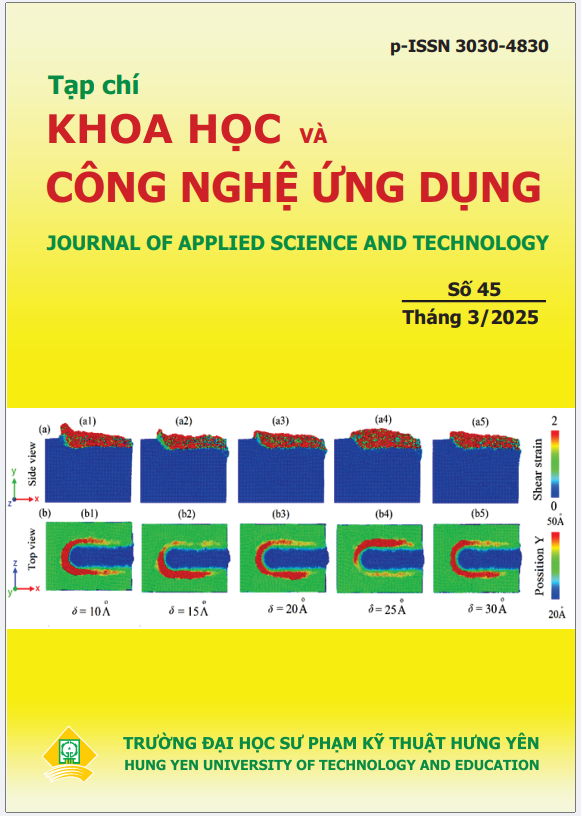BUILDING A SYSTEM FOR MEASURING MECHANICAL PROPERTIES AT VARIOUS POINTS OF A CAR SEAT CUSHION
Abstract
This paper focuses on presenting a system for measuring the mechanical properties of a car seat cushion. The mechanical system includes a support frame that securely holds the car seat in place and a 3-axis CNC motion mechanism that enables the force sensor to move flexibly and accurately to the required measurement positions, as well as to follow the desired movement trajectories. The mechanical system is designed using Inventor software and experimentally fabricated.
The servo motor control system utilizes a PLC controller and TIA Portal software to ensure precise positioning and movement along the desired trajectory. Data measurement and acquisition are carried out using the NI USB 6001, with an interface programmed in LabVIEW, enabling reliable data collection and easy control. The collected data is further processed using MATLAB to generate force-displacement curves, representing the mechanical properties of the seat cushion at different measurement points. Finally, some measurement results are analyzed and evaluated to demonstrate the system’s reliability.
References
K. Ebe and M. J. Griffin, “Factors affecting static seat cushion comfort,” Ergonomics, 2001, vol. 44, no. 10, pp. 901–921, doi: 10.1080/00140130110064685.
S. E. Hänel, T. Dartman, and R. Shishoo, “Measuring methods for comfort rating of seats and beds,” Int. J. Ind. Ergon., 1997, vol. 20, no. 2, pp. 163–172, doi: 10.1016/S0169-8141(96)00049-2.
M. Petrů and O. Novák, “Measurement and Numerical Modeling of Mechanical Properties of Polyurethane Foams,” Asp. Polyurethanes, 2017, doi: 10.5772/intechopen.69700.
R. Deng, P. Davies, and A. K. Bajaj, “A nonlinear fractional derivative model for large uni-axial deformation behavior of polyurethane foam,” Signal Processing, 2006, vol. 86, no. 10, pp. 2728–2743, doi: 10.1016/j.sigpro.2006.02.029.
C. C. Gordon et al., “1988 Anthropometric Survey of U.S. Army Personnel: Methods and Summary Statistics. Final Report. (NATICK/TR-89/027), U.S. Army Natick Research, Development and Engineering Center,” 1989.
G. Kyung and M. A. Nussbaum, “Driver sitting comfort and discomfort (part II): Relationships with and prediction from interface pressure,” Int. J. Ind. Ergon., 2008, vol. 38, no. 5–6, pp. 526–538, doi: 10.1016/j.ergon.2007.08.011.
M. P. Reed, M. A. Manary, and L. W. Schneider, “Methods for measuring and representing automobile occupant posture,” SAE Tech. Pap., 1999, no. 724, doi: 10.4271/1999-01-0959.
J. Hu and M. Reed, “Development of a methodology for simulating seat back interaction using realistic body contours,” SAE Int. J. Passeng. Cars - Mech. Syst., 2013, vol. 6, no. 2, pp. 623–628, doi: 10.4271/2013-01-0452.
P. Mondal and S. Arunachalam, “Finite Element Modelling of Car Seat with Hyperelastic.

